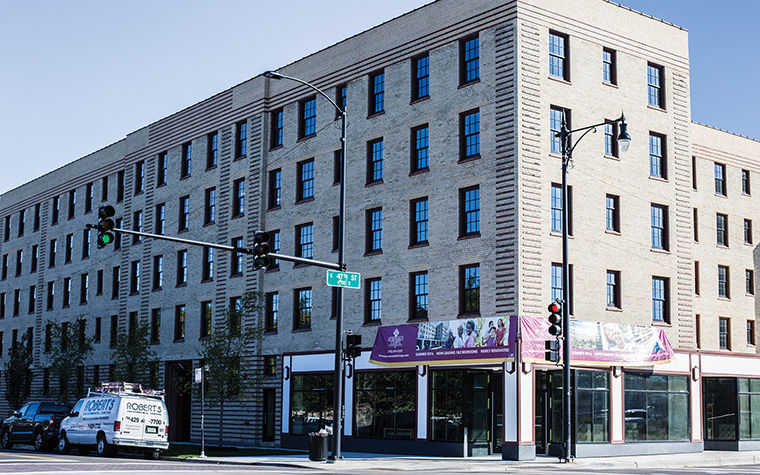Historic building reopens in Bronzeville
Mayor Rahm Emanuel teamed up with Chicago Housing Authority to open Rosenwald apartments in Bronzeville, according to a City of Chicago press release.
October 17, 2016
After four years of construction and renovation, Mayor Rahm Emanuel, Alderman Pat Dowell (3rd Ward) and the Chicago Housing Authority reopened the historic Rosenwald Court apartments on Sept. 30, according to a CHA press release.
The building will serve as a contemporary, affordable apartment complex in the Bronzeville neighborhood, according to the press release.
The goal for this building is to serve as a community destination and to bring new economic opportunities and affordable housing to the area, according to the City of Chicago press release.
“This is a historic property that is a landmark,” said Molly Sullivan, senior director of Communications and Media Relations for CHA. “It could not be demolished. This was a $132 million project; it is very hard to find a $132 million anywhere. It took a long time to work through all of the details.”
Sullivan said that the historic building is going back to its original purpose: providing quality housing for people in the Bronzeville community.
According to the Sept. 30 city press release, the building was built in 1930 by former Sears, Roebuck Co. President Julius Rosenwald and was known as the Michigan Boulevard Garden Apartments. The building was home to notable Chicagoans, such as poet Gwendolyn Brooks, music producer Quincy Jones, singer Nat “King” Cole and boxer Joe Lewis, but closed in 2000 and sat vacant until renovations began more than two years ago.
The project included new central entrances with large lobbies and elevators, new mechanical and electrical systems, a restoration of the building’s facades, and an updated courtyard with new landscaping , a playground, bike storage and dog runs, according to the press release.
The project was made possible with the help of Rosenwald Courts Developers, LLC with financial support from the City of Chicago and CHA. The $132 million project involved the rehabilitation of 239 one- and two-bedroom units for seniors and families, according to the press release.
There was also a $17.4 million CHA loan, and an $8.5 million City of Chicago loan Neighborhood Stabilization Program, according to Deputy Commissioner for the Chicago Department of Planning and Development Peter Strazzabosco. He added that the city also sold five adjacent lots, valued at $155,000, for a dollar each to accommodate parking for users of the retail space and the building.
“The city was interested in supporting this project because [it is] one of the largest and culturally significant rehabilitation projects in the history of the South Side,” Strazzabosco said.
Dowell told the Chronicle that the apartment complex will be a great addition to the community because it will bring new commercial opportunities and jobs for the residents and members of the community, as well as offer affordable housing.
“This is good for the community because we are taking this historical landmark and saving it and, at the same time, providing much needed housing in the community,” she said.








